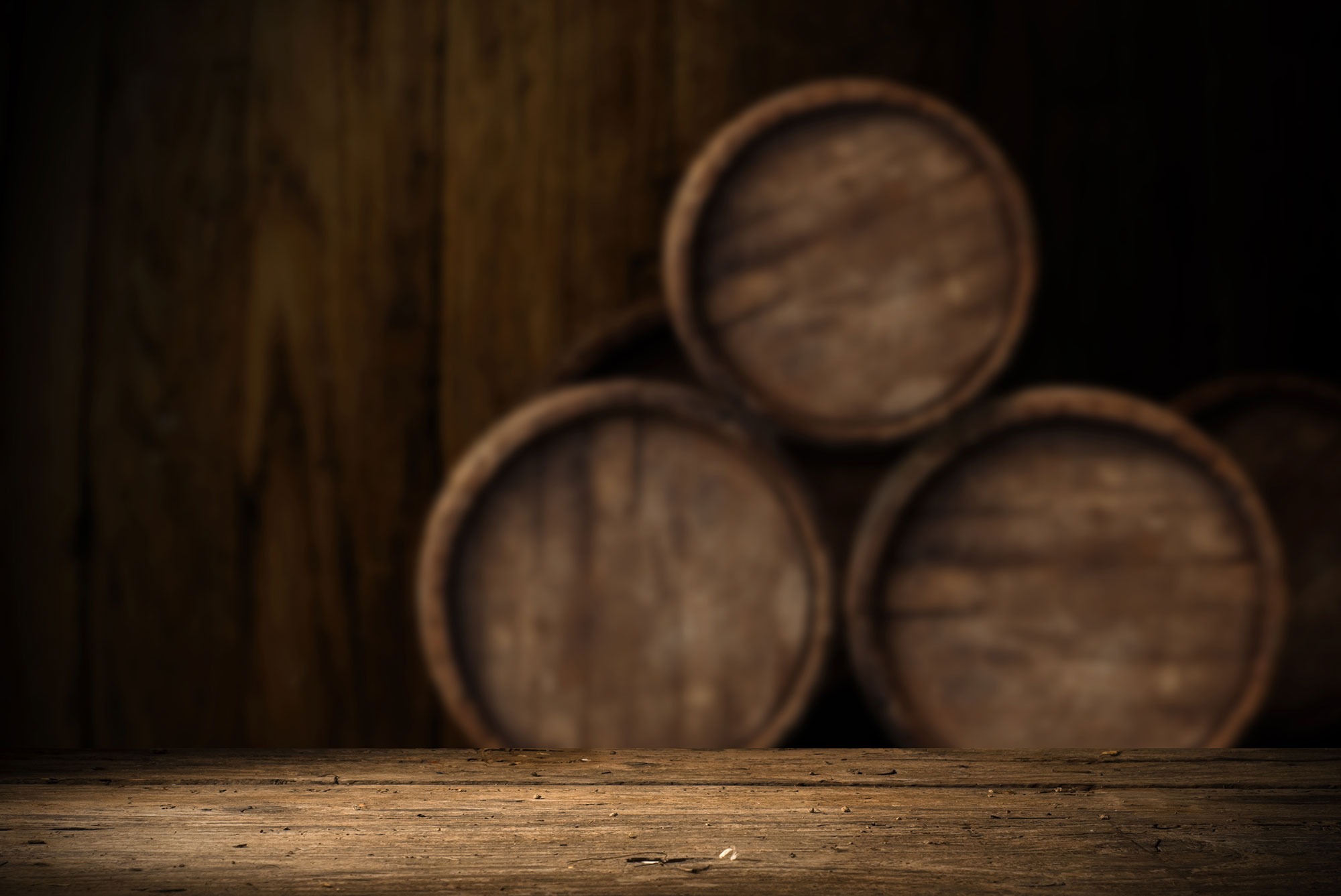STUDY FINDS MORE THAN 1,300 ACTIVE CRAFT SPIRITS PRODUCERS IN U.S. ACSA, IWSR, and Park Street Identify Key Trends and Considerations in the U.S. Craft Spirits Industry
NEW YORK, NY (October 18, 2016) – The American Craft Spirits Association (ASCA), the International Wine and Spirits Research (IWSR), and Park Street today presented highlights from the Craft Spirits Data Project (the Project) at the inaugural Craft Spirits Economic Briefing at the Nomad Hotel in New York. The Craft Spirits Data Project, which was announced earlier this year, is a research initiative to provide a solid and reliable fact base for evaluating performance and trends in the U.S. craft spirits industry. The year-long Project, which seeks to quantify the number, size, and impact of craft spirits producers in the U.S., is an effort led by ACSA, IWSR, and Park Street, with collaboration from key government and industry organizations, including the U.S. Alcohol and Tobacco Tax and Trade Bureau (TTB), the National Alcohol Beverage Control Association (NABCA), American Beverage Licensees (ABL), the Wine & Spirits Wholesalers of America (WSWA), and data partners Acturus, Liquor.com and Nielsen.
For the purposes of the Project, U.S. craft spirits were defined as distilled spirits that are produced in the U.S. by licensed producers that have not removed more than 750,000 proof gallons (or 394,317 9L cases) from bond, market themselves as craft, are not controlled by a large supplier, and have no proven violation of the ACSA Code of Ethics.
Key findings and highlights revealed during the briefing include the following: 1) The U.S. craft spirits industry is growing rapidly. As of August 2016, there were 1,315 craft distillers active in the U.S. The U.S. craft spirits market reached 4.9m cases and $2.4bn in retail sales in 2015, growing at a compound annual growth rate (CAGR) of 27.4% in volume and 27.9% in value between 2010 and 2015. The market share of U.S. craft spirits reached 2.2% in volume and 3.0% in value in 2015, up from 0.8% and 1.1% in 2010, respectively.
2) Exports offer an additional runway for growth. Exports of U.S. craft spirits reached 523,000 cases in 2015, adding more than 10% of additional volume to U.S. craft distiller total sales. 3) Employment and investment are on the rise among craft distillers. Employment in the U.S. craft spirits sector has been on the rise. In 2016, the industry employed over 12,000 full-time employees (FTEs). Investments by the U.S. craft industry have reached close to $300 million in 2015, which primarily covered the build out of tasting rooms and other visitor experiences, equipment to increase production capacity, and associated labor costs.
For Media Inquiries:
Alexandra Sklansky
GATHER PR
Alexandra@gatherpr.com
516.428.7210
4) There is the potential for craft spirits to achieve market share parity with craft beer. Many surveyed retailers and wholesalers see the potential for craft spirits to perform in line or better than craft beer over time. With craft beer market share currently at 11% in the U.S., the craft spirits market is expected to continue to grow rapidly.
5) Direct sales and home state sales are crucial for small craft spirits producers. Direct sales at the distillery are important for all craft distillers but especially important for small craft producers (between 0 and 100,000 proof gallons removed from bond annually), where direct sales make up 25% of all total sales. Home state sales outside the distillery for small producers comprise 67% of all sales.
6) The U.S. craft distilling market is fairly concentrated. Geographically, the market is concentrated as well. The top five states by number of craft distilleries (CA, NY, WA, CO & TX) make up 35.6% of U.S. craft distiller universe, and the next five states (OR, PA, NC, OH, FL) comprise an additional 16.5% of the market.
7) Respondents provide actionable recommendations for continued growth. Surveyed distillers, retailers, and wholesalers provided actionable recommendations to the U.S. craft spirits industry and its regulators to help the industry continue to grow. Craft spirits producers point to excise tax parity as one of the most critical keys to success in the future. Taxes on distilled spirits are among the nation’s highest, comprising 54% of the typical spirits product’s purchase price. As ACSA has previously emphasized, craft spirits producers remain disadvantaged compared to our nation’s craft brewers and small wineries that receive a significant reduction in their Federal Excise Tax (FET) rate. Today, a craft spirits producer pays 6 times more FET than a craft brewer and 17 times more FET than a small winery for equal quantities of beverage alcohol.
PROJECT BACKGROUND AND METHODOLOGY
Together, the ACSA, IWSR, and Park Street launched the Craft Spirits Data Project in October 2015. Data collection began in January 2016 and was completed in August, 2016. The Project collected data from spirits consumers, DSPs, distributors, and on- and off-premise retailers. Collaborative partners included government and industry organizations the U.S. Alcohol and Tobacco Tax and Trade Bureau (TTB), the National Alcohol Beverage Control Association (NABCA), American Beverage Licensees (ABL), and the Wine & Spirits Wholesalers of America (WSWA), market research firms Acturus and Nielsen, and digital publication Liquor.com.
This program aims to create a deeper understanding of the U.S. craft spirits landscape among four key groups: consumers, DSPs, distributors, and retailers. In addition to analyzing craft spirits brand perceptions and consumption drivers at the consumer level, the study collects data on craft distiller production size and patterns, sources and amounts of revenue, and the category’s overall economic impact within the spirits industry. The Project also collects data on craft spirits business size, patterns and outlook on the distributor level and assesses craft spirits business size and outlook by premise type at retail. The Project provides findings on craft supplier best practices and success factors. U.S. Craft spirits – as defined for the purposes of the research – are distilled spirits that are produced in the U.S. by producers that have not more than 750,000 proof gallons (or 394,317 9-liter cases) removed from bond on an annual basis and market themselves as craft and have no proven violation of the ACSA code of ethics. The ACSA code of ethics states: “We operate in an honest, transparent and non-deceptive fashion. We inform consumers truthfully and accurately about the sources and methods used to make our spirits through our labels, materials and communications. We expect fair dealing and respect amongst members. We obey all federal, state, and local laws.”
When estimating the number of producers behind the U.S. craft spirits production, the project team relied on a combination of official data released by regulatory authorities, survey data, other industry data sources both national (e.g., NABCA, TTB) and regional (e.g., Guilds), as well as interviews and team assessments using the craft distiller definition.
ABOUT ACSA
The American Craft Spirits Association is the only registered non-profit trade association representing the U.S. craft spirits industry. Its mission is to elevate and advocate for the community of craft spirits producers, and membership in ACSA is open to anyone.
ACSA is governed by a Board of Directors elected by the eligible voting members of the Association. Voting members must be independent, licensed distillers (DSPs) annually removing fewer than 750,000 proof gallons from bond (the amount on which a federal excise tax is paid.)
ABOUT THE IWSR
The IWSR is the leading source of data and analysis on the beverage alcohol market. It is the longestrunning research company specializing exclusively in global alcoholic drinks. The IWSR’s comprehensive database quantifies the global and local market of wine, spirits, beer, cider and prepared cocktails by volume and value, and provides insight into short- and long-term trends.
The IWSR’s methodology is unique. It is the only research company to annually visit distributors, importers, producers, retailers and duty-free operators in each market. This allows IWSR to better understand market dynamics, real consumption figures, and to explain why certain trends occur. The IWSR conducts face-to-face interviews with 1,500 companies in 120 countries each year, with further input from 350 companies. The IWSR provides more detail on more brands, across more countries, than any other source. The IWSR produces several special reports each year; for more details, please visit www.theiwsr.com
ABOUT PARK STREET
Park Street delivers productivity-enhancing and cost-saving back-office solutions, advisory services, and working capital to more than 3,000 alcoholic beverage brands from the U.S. and around the world. Established in 2003, the company provides a fast and reliable conduit to the U.S. and E.U. markets and a cost-effective operating platform. Park Street works with suppliers at all stages of growth and its clients range from entrepreneurial craft distillers to multi-brand global portfolios.
The firm’s major practice areas are 1) Back-Office Solutions, including regulatory compliance, logistics, national importing, distribution, warehousing, order-fulfillment, accounting, customer service, and more; 2) Advisory Services, including business building, route-to-market planning, organizational effectiveness, strategic partnerships, joint ventures, negotiation support, and more; 3) Working Capital Solutions, including accounts receivable financing (factoring), revolving credit facilities, term loans secured by accounts receivables and other assets, guarantees, and letters of credit. With its extensive expertise in the alcoholic beverage sector, Park Street provides clients comprehensive, turn-key solutions across its practices areas, all within the context of exceptional professional service delivery. www.parkstreet.com.
# # #



